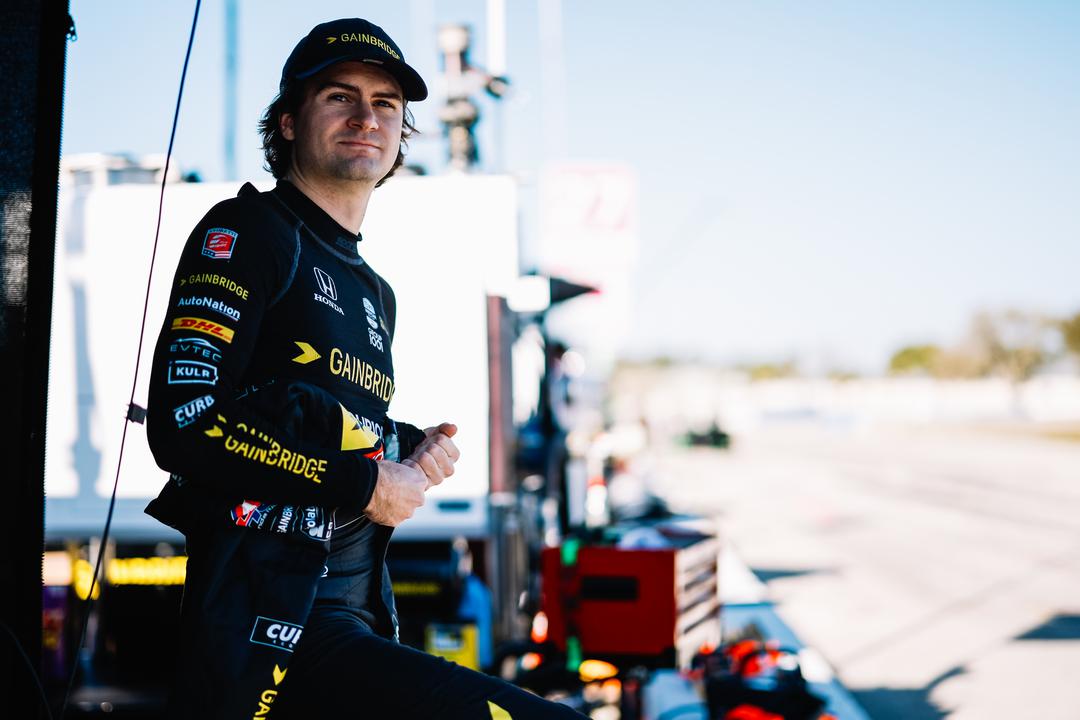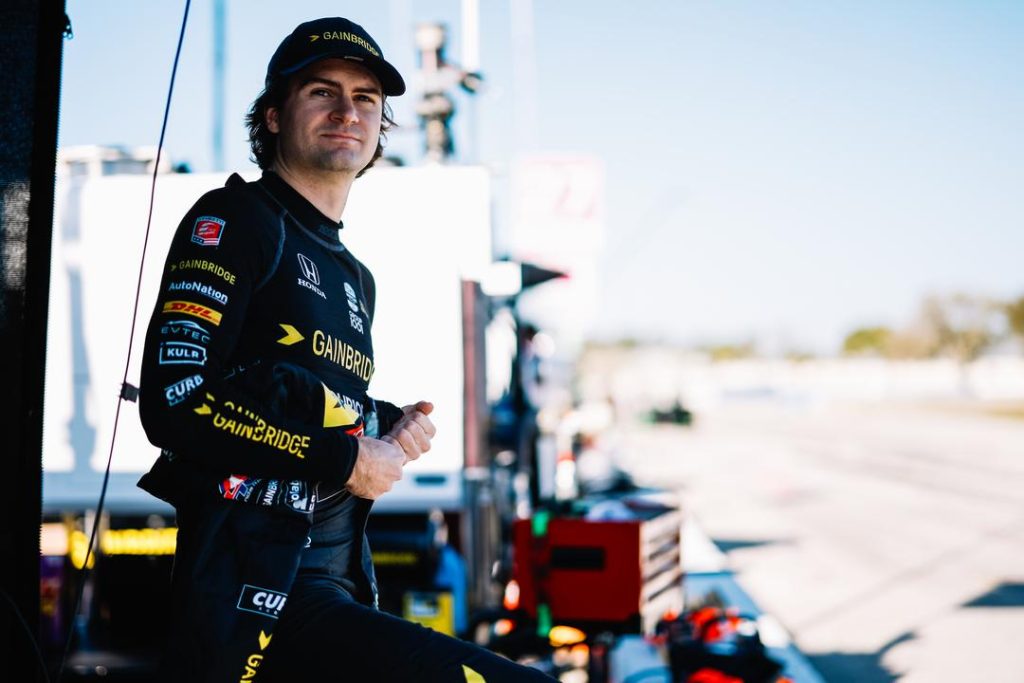

Newgarden finally addressed the furore in a lengthy, emotional press conference in the hours head of Friday practice at the Grand Prix of Alabama, where he claimed that he was under the misapprehension that IndyCar had changed its rulebook.
While team-mate Scott McLaughlin, who was also disqualified from Race 1 of the season, said he was aware that rules prohibiting push-to-pass on starts and restarts had not changed, Newgarden had earlier put it down to confusion and noted that such usage was allowed for the exhibition race at The Thermal Club.
Herta said, “No, that’s bullshit. That’s wrong. No. He knows.
“But if he thought that, why didn’t he push it at the start? He didn’t push it at the start. He pushed it on the restarts.
“You would think when everybody stacked up the most, you would push it. So that’s a lie.”
Newgarden said he and the Car #2 camp became “convinced” of a rule change.
On that, Herta said, “I know that the team would have told us if that was [true], I know that they would have made a huge point about it that you can use it on the starts.
“I know that it probably would have been said in the drivers’ meeting, too. Like, ‘Hey, the rules have changed, remember you can use it now.’ It just would have been mentioned.
“If you think ‘Penske Perfect’ and all that, you would think they would have mentioned it, too.
“At the end of the day, it’s a Penske problem. Even though they took advantage of it, and that’s wrong. It shouldn’t have been in the car to begin with.
“I think some of what Josef said wasn’t true. I don’t believe it, and so maybe what he said is true about it taking a little bit [to regain the trust of his rivals], but we’ll see.”
That Newgarden was even capable of obtaining a response from the overtake button, in the form of extra horsepower, was attributed by Penske to an oversight arising from hybrid development, with team President Tim Cindric now explaining to media that code which was modified in August last year for testing was carried over.
Herta was not buying the explanation either.
“I could believe that St Pete. was a mistake,” said the Andretti Global driver. “I could totally believe that.
“Their hybrid testing car right was probably a different chassis, and they probably just took that whatever the coding is.
“I don’t know exactly how it works, but they probably implemented it. I believe that, and that’s possible.
“But what’s not possible is to go to Long Beach again with it with the intent to use it again.”
Chip Ganassi Racing’s Scott Dixon, who won at Long Beach and inherited the series lead with Newgarden’s St Petersburg disqualification, was not even that generous.
Asked if he believed the hybrid coding explanation, Dixon replied, “No. Every team did a hybrid testing. It’s not a part of code that you needed to change for hybrid testing.
“So, I don’t know where they’re going with that one.”
Cindric provided his version of events to Indianapolis newspaper IndyStar this week, stating that Penske engineers manipulated code in the central logger unit (CLU) so that push-to-pass was always available during hybrid testing.
In summary, IndyCar uses the electronic control unit (ECU) as the first step in disabling/enabling P2P for a given session.
However, because P2P is restricted to certain periods of the race (ie not on start or restart laps until the alternate start/finish line, or under Caution), the next step is for beacons set up around the circuit to send a signal to the CLU.
The signal then passes through the CLU to the ECU to finally determine if P2P is disabled/enabled.
Back in August, according to Cindric, Penske simply hardcoded the CLU such that push-to-pass was always enabled, although he claims it did not give his team’s cars more allocation than the 150 seconds of overtake time for St Petersburg.
“We can’t [add our own] overtake, but when [any] is in the ECU, and it’s loaded, basically, it’s available all the time,” he explained.
“There’s a line in the CLU that is looking for a number, and we altered that number to just be a constant.
“That then means that if the ECU is loaded with ‘overtake’, and if there’s a certain signal, then it will work.
“That ‘constant’ in the CLU means [push-to-pass] was always available. There was no ‘signal-cancelling’ [as was theorised in one report]. It’s a lot simpler than people are making it out to be.”
Cindric furthermore reasoned that Penske would not have set out to cheat because, he argues, the anomalies were noticeable.
That is despite the fact that an issue only became apparent when technical difficulties meant IndyCar did not enable P2P at the start of the Long Beach Warm Up, yet Penske cars were already using it.
“The difficulty with this whole situation is that people expect we were trying to circumvent the rules with the software, and honestly, we weren’t,” he claimed.
“Why would we do it when the push-to-pass and RPM data is available for everyone to see, and why would we think that no one would notice?
“Our competitors can see that. IndyCar gets all the data files after every race, so these are things you can’t hide.
“To say we purposefully did this to get an advantage, I don’t know how you can come to that conclusion, unless that’s what you want to believe.”






















Discussion about this post